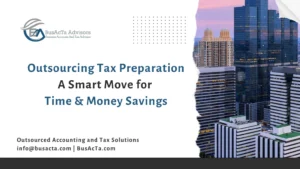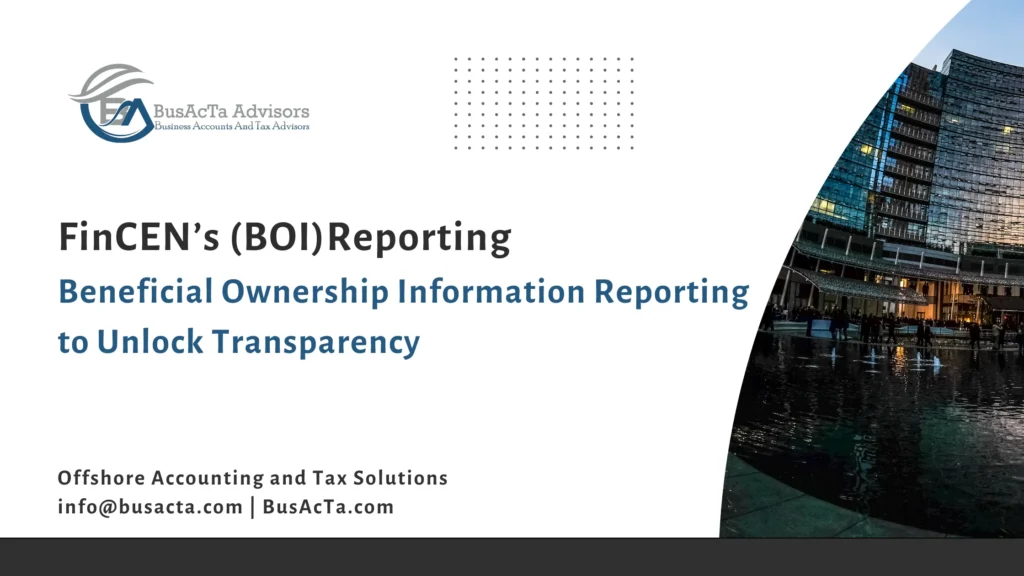Energy Efficient Home Improvement Credit: A Complete Guide
Eco-friendly home improvements have been a trend in recent years. Many businesses and homeowners are installing energy-efficient windows, doors, heating systems, and insulation.
Regarding this, the Inflation Reduction Act provides $1 Billion for affordable energy-efficient housing in the US. The purpose of these tax credits is to promote environment-friendly energy practices. If you have made any eco-friendly improvements after Jan 1, 2023, you can get a 30% credit. However, these credits apply to qualified energy-efficient products.
This blog will brief you on when tax credits are applicable, eligible home improvements, and how you can claim tax credits.
Who is Eligible to Claim Tax Credit?
Anyone who made energy-saving improvements in their home located in the United States during the year is eligible to claim residential clean energy credit and energy efficient home improvement credit.
Here, the following are the points you should know before taking credit;
1. Home: A home is where you lived during the year and can include a house, houseboat, mobile home, cooperative apartment, condominium, and a manufactured home that conforms to Federal Manufactured Home Construction and Safety Standards.
2. Main Home: It’s generally the home where you live most of the time during the year. If you have to be away for a short time for reasons like illness, school, business, military service, or vacation, your main home won’t change.
3. Costs: For the purposes of both credits, costs are treated as paid when the item’s installation or, in the case of costs associated with the reconstruction of your home, when your original use of the item begins.
4. Association or cooperative costs: In the case of the proportion of any cost incurred by a condominium management association for a condominium owned by a taxpayer or a cooperative housing corporation, the cost is treated to be paid once they become tenant-stockholder.
5. Receipt of Subsidy: If a taxpayer received a subsidy from a public utility for the purchase or installation of an energy-saving product and that subsidy wasn’t included in their gross income, they must lower the cost of the product by that amount before figuring out their tax credit. This rule also holds true if someone else, like a contractor, gets the subsidy for you.
Eligible Home Improvements for the Credit
The residential clean energy credit is available for both existing homes and homes being constructed. The energy efficient home improvement credit is only available for existing homes.
Several vital improvements qualify for the Energy Efficient Home Improvement Credit. These improvements should be new to be eligible for credit.
1. Insulation and Air Sealing
Tax Credit Equals to 30% of the eligible cost
Insulation and air sealing reduce the amount of heat escaping in winter or entering in summer. As a result, your HVAC system doesn’t need to work as hard, which lowers your energy bills.
Eligible insulation materials for credit include rigid boards, pour-in-place, and expanding spray. Air leak products can also qualify with a manufacturer’s Certification Statement, such as weather stripping, spray foam, house wrap, etc.
You can claim 30% of the product cost through this program.
2. Energy-Efficient Doors, Windows and Skylights
Tax Credit Available for
Exterior windows and skylights: 30% of the cost, up to $600
Exterior doors: 30% of the cost, up to $500
Energy-efficient doors and windows are eligible for the tax credits. However, you must opt for products with the ENERGY STAR® label, ensuring that the windows and doors meet or exceed federal energy efficiency standards.
You can apply for the credit on new products, which will be 30% of the cost, up to $600 for windows and doors, and 30% of the product cost, up to $500.
3. Solar Energy Systems
Tax Credit Equals to 30% of the cost
Installing solar panels in your home can help use the sun as an energy source to eliminate your electricity bills. To qualify for credits, your solar panels must meet specific efficiency standards and be installed in your primary or secondary home. Solar energy systems are eligible for a 30% tax credit on the product cost.
4. Heating, Ventilation, and Air Conditioning (HVAC) Systems
Tax Credit Available for
Heat Pumps and Heat Pump Water Heating: 30% of cost, up to $2000
Air-Conditioners: 30% of cost, up to $600.
Heating Equipment: 30% of Cost, up to $600
A sound HVAC system can minimize the energy our home uses. It includes energy-efficient furnaces, air conditioners, and heat pumps. These systems must meet specific efficiency requirements to qualify for tax credits, such as a high Seasonal Energy Efficiency Ratio (SEER) for air conditioners or a high Annual Fuel Utilization Efficiency (AFUE) for furnaces. The tax credit applicable to these products varies.
Geothermal Heat Pumps
Tax Credit 30% of Eligible Cost
Geothermal heat pumps can lower your energy costs significantly. So, these are also eligible for tax credits. However, your system must meet ENERGY STAR® criteria and be installed in a qualifying residence. You can claim 30% of product cost as an energy-efficient home improvement credit.
Key Requirements for Eligibility
There are a few requirements to be eligible for a home improvement tax credit:
- If you can’t claim tax credit because of the tax liability limit, you can carry over the unused portion of tax credit to next year. This FORM 5696 is required to be filed even if, you are not taking any tax credit in that year.
- Taxpayer claiming tax credit must reduce the tax basis of the home or home improvement by the amount of tax credit they availed.
- To claim energy Efficient Home Improvement Credit,
- the qualified energy property must have been originally placed in service by the tax payer.
- a home energy audit must have included an inspection of your main home located in the United States and a written report prepared by a certified home energy auditor.
- For the purposes of the credit, you can rely on a written statement from the manufacturer that a product is eligible property for the credit. Don’t attach the certificate with your return. Keep it for your records.
- To claim tax credit, the improvements must be completed within the tax year you claim the credit. Also, don’t forgot to keep records of all purchase and installation costs for tax filing.
How to Claim for The Credit?
You can claim the credit for energy-efficient home improvements on the eligible products by attaching form 5696 with your tax return credits. Form 5696 divided into two parts,
Part 1: The residential clean energy credit, and
Part 2: The energy efficient home improvement credit.
You need to claim it in the year when the improvements are installed, not just purchased.
You can check the instructions for form 5695 here.
Many people miss out on home improvement credit because they are unsure how to claim and what things to keep in mind. If you also installing energy efficient home improvements equipment, you can save 30% of the energy-efficient equipment cost. We can help you to claim these credit on purchasing energy-efficient products. Our team of experts will provide detailed tax advice and allow you to apply for the tax credits. Email us on info@busacta.com or call us at +1 315 226 7626.
FAQs on Energy Efficient Home Improvement Credit
- Exterior doors (30% of costs, up to $250/door, $500 total)
- Windows and Skylights (30% of costs, up to $600)
- Insulation and air sealing (30% of costs)
- Energy audits (30%, up to $150)
- Heat pumps, biomass stoves/boilers, HVAC, and panel upgrades (30% of costs, up to $600 each).
Answer: Yes, the Energy Efficient Home Improvement Credit has a yearly limit of $1,200 for most improvements. However, certain items like heat pumps and biomass systems have a separate $2,000 limit, bringing the total possible credit to $3,200 annually.
Answer: Eligible residential clean energy expenditures for a 30% Residential Clean Energy Property Credit include solar panels, solar water heaters, fuel cells, wind turbines, geothermal heat pumps, and battery storage systems. The credit covers 30% of the installation cost.
Answer: The Residential Clean Energy Property Credit has no overall dollar limit except for fuel cell property. Fuel cell credits are capped at 30% of expenditures, with a maximum credit of $500 per half-kilowatt capacity or $1,667 for jointly occupied residences.
Answer: To qualify for the Residential Clean Energy Property Credit, solar water heating systems must be certified by the Solar Rating Certification Corporation or an equivalent government-endorsed entity. Geothermal heat pumps must meet Energy Star requirements, and battery storage systems must have a capacity of 3 kWh or greater.
Answer: A taxpayer can claim the Energy Efficient Home Improvement Credit for qualifying expenditures on an existing home, including renovations or additions, but not for a newly constructed home. However, the Residential Clean Energy Property Credit is available for existing and newly built homes.
Answer: Yes, when calculating the Residential Clean Energy Property Credit, taxpayers may include labor costs related to the onsite preparation, assembly, and installation of the qualifying property, as well as piping or wiring needed to connect the property to the home.
Answer: No, there is no lifetime limit on the credits. The limits are determined annually. Starting in 2023, taxpayers can claim the maximum Energy Efficient Home Improvement Credit each year as long as eligible improvements are made during that year.








